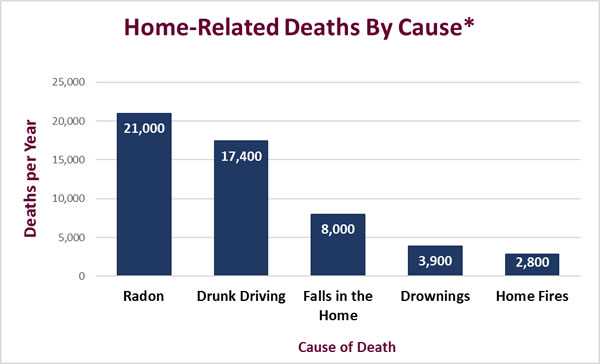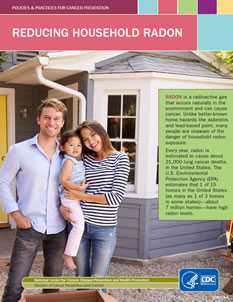Promising Practices Brief: Reducing Household Radon
Radon is a radioactive gas that occurs naturally in the environment and can cause cancer. Unlike better-known home hazards like asbestos and lead-based paint, many people are unaware of the danger of household radon exposure.
Every year, radon is estimated to cause about 21,000 lung cancer deaths in the United States. The U.S. Environmental Protection Agency (EPA) estimates that 1 of 15 homes in the United States (as many as 1 of 3 homes in some states)—about 7 million homes—have high radon levels.
Radon exposure is thought to cause more deaths each year than other household dangers like falls, fires, and drowning. Each year, lung cancer caused by radon costs about $2 billion in medical care expenses and lost productivity.

*Radon is thought to cause about 21,000 lung cancer deaths per year, according to EPA’s 2003 Assessment of Risks of Radon in Homes (EPA 402-R-03-003) [PDF-548KB]. The numbers of deaths from other causes are taken from the Centers for Disease Control and Prevention’s 1999–2001 National Center for Injury Prevention and Control Report and 2002 National Safety Council Report.
- Page last reviewed: September 25, 2017
- Page last updated: September 25, 2017
- Content source:
- Maintained By:


 ShareCompartir
ShareCompartir
